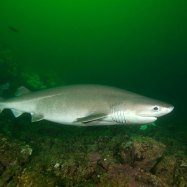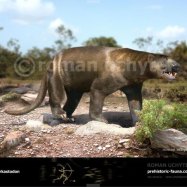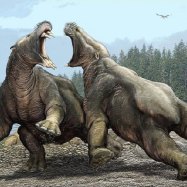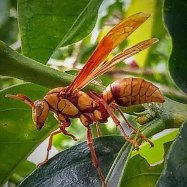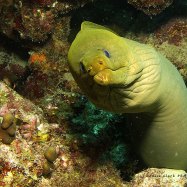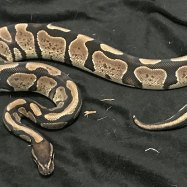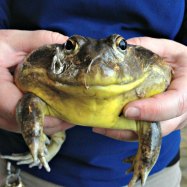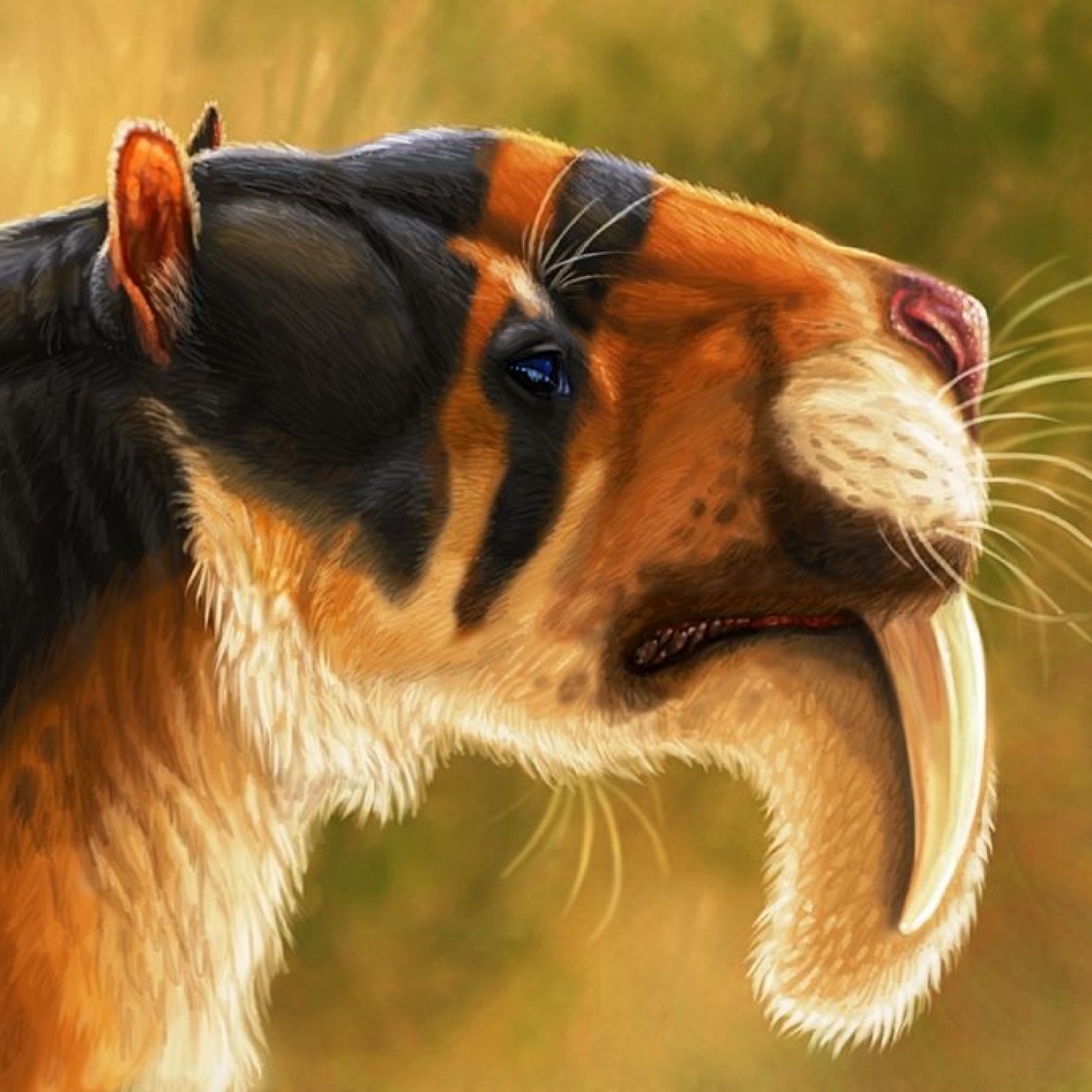
Thylacosmilus
Approximately 1.5 meters
Thylacosmilus, also known as saber-toothed cat, was a fearsome predator that roamed the wilds of Argentina millions of years ago. With a body resembling a modern-day cat, this powerful animal measured about 1.5 meters in length. Fossils of Thylacosmilus provide valuable insight into the diversity of prehistoric animals and their unique adaptations. #Thylacosmilus #prehistory #fossil #Argentina
Animal Details Summary:
Common Name: Thylacosmilus
Kingdom: Animalia
Habitat: Grasslands and forests
The Enigmatic Thylacosmilus: The Cat-like Carnivore of South America
The animal kingdom is full of intriguing and fascinating creatures, and one such animal is the Thylacosmilus. While it may not be a household name like the lion or the tiger, this ancient mammal has a story worth telling. So, let us delve into the world of the Thylacosmilus and discover what makes it such a unique and remarkable animal.Ancient Origins
Thylacosmilus, also known as Thylacosmilus atrox, was an extinct carnivorous mammal that lived during the late Miocene to early Pliocene epochs in South America Thylacosmilus. Its scientific name translates to "pouch-like smilodon", implying a resemblance to the more well-known Smilodon, commonly known as the saber-toothed cat.The Unique Classification of Thylacosmilus
Despite its name, Thylacosmilus is not related to cats at all. In fact, its classification is quite unique. It belongs to the Order Sparassodonta, a group of carnivorous marsupial-like mammals that evolved in South America around 60 million years ago. This makes Thylacosmilus a distant relative of marsupials like kangaroos and opossums.A Habitat Unlike Any Other
Thylacosmilus inhabited the grasslands and forests of South America, a continent that was once isolated from the rest of the world. This isolation led to the evolution of unique species, including the Thylacosmilus. With no competing predators, it was free to roam and thrive in its environment.A Diet of Meat
Thylacosmilus was a carnivore, with no known herbivorous tendencies Triggerfish. It most likely fed on a varied diet of small and large animals, such as mammals, birds, and reptiles. Its sharp and long front teeth, along with its powerful jaw muscles, allowed it to deliver a swift and deadly bite to its prey.The Hunt for Fossils
Fossils of Thylacosmilus have only been found in Argentina so far, with most being discovered in Patagonia. These fossils have been dated to be between 5 and 2 million years old. The reason for this limited geographical distribution is still unknown, but scientists believe it could be due to the changing landscape and climate of South America during that time.Uncertain Coloration and Body Shape
One of the most intriguing aspects of Thylacosmilus is its coloration and body shape. While the exact colors of its fur are unknown, it is believed to have had a cat-like appearance, with a sleek and muscular body and a long tail. Its limbs were also relatively long, suggesting a swift and agile predator.Size Matters
Thylacosmilus was a large animal, with an estimated length of about 1.5 meters. Its body size was similar to that of a large leopard, but with a much more robust build.The Megatooth Carnivore
The most distinctive feature of Thylacosmilus was its enormous front teeth. While most carnivores have sharp, dagger-like canine teeth, Thylacosmilus had two massive, curved, and serrated teeth on its upper jaw. These teeth, commonly referred to as "megatooth", were more than 10 cm long and were used for delivering a deadly bite to its prey.The Theories Surrounding the Function of the Megatooth
The unique feature of Thylacosmilus has led to much speculation about its function. Some scientists believe that the megatooth was used for fighting and display, while others think it was used to slice through tough animal hides. However, the most widely accepted theory is that the megatooth was used to pierce and crush the bones of its prey, allowing Thylacosmilus to reach the bone marrow, a rich source of nutrients.The Continuing Mysteries of Thylacosmilus
Despite its remarkable features, there is still much that remains a mystery about Thylacosmilus. With limited fossils found, scientists are still trying to piece together its complete physical appearance and understand its role in the ecosystem. They are also trying to determine the reason for its extinction, as it is believed to have disappeared around the same time as many other species during the Pliocene extinction event.A Rare and Threatened Species
While Thylacosmilus may be an extinct species, its story highlights the impact of environmental changes and human activities on animal populations. The fact that it was once a thriving species unique to South America only adds to its importance and the need to protect and preserve the biodiversity of our planet.The Legacy of Thylacosmilus
The legacy of Thylacosmilus lives on through the fossils and discoveries made by paleontologists. With advancements in technology and research, we continue to learn more about this enigmatic creature and the role it played in the ancient ecosystem of South America. Its unique classification and features have also sparked interest and debate among scientists, making it a valuable species for study and understanding our planet's evolutionary history.Conclusion
In conclusion, Thylacosmilus is a remarkable and intriguing animal, with a history that dates back millions of years. Its unique features and classification make it a vital species in the study of evolution and biodiversity. As our understanding of this ancient mammal continues to grow, the legacy of Thylacosmilus will live on, reminding us of the wonders and mysteries of the animal kingdom.

Thylacosmilus
Animal Details Thylacosmilus - Scientific Name: Thylacosmilus
- Category: Animals T
- Scientific Name: Thylacosmilus
- Common Name: Thylacosmilus
- Kingdom: Animalia
- Phylum: Chordata
- Class: Mammalia
- Order: Sparassodonta
- Family: Thylacosmilidae
- Habitat: Grasslands and forests
- Feeding Method: Carnivorous
- Geographical Distribution: South America
- Country of Origin: Argentina
- Location: Fossils found in Argentina
- Animal Coloration: Not known
- Body Shape: Cat-like
- Length: Approximately 1.5 meters
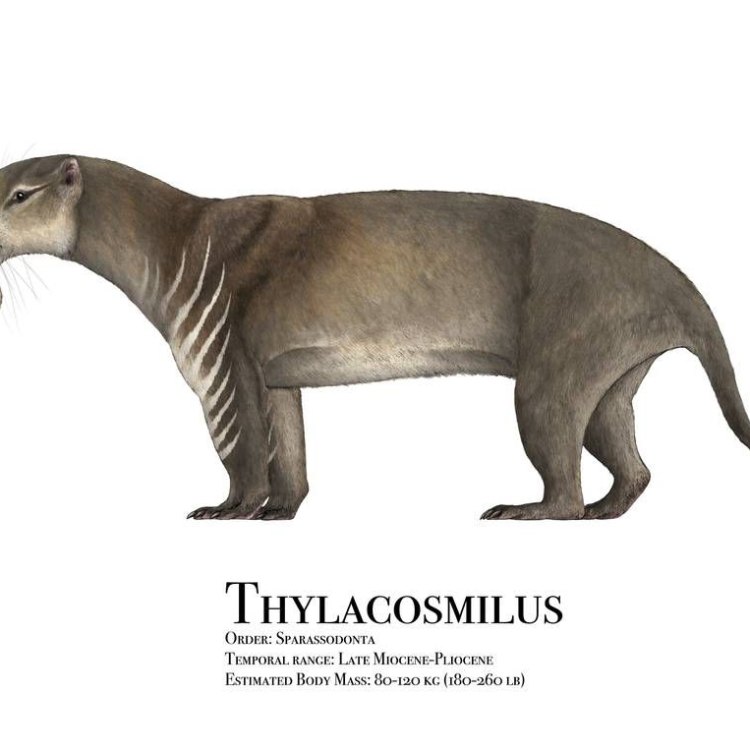
Thylacosmilus
- Adult Size: Large
- Average Lifespan: Unknown
- Reproduction: Viviparous
- Reproductive Behavior: Unknown
- Sound or Call: Unknown
- Migration Pattern: Non-migratory
- Social Groups: Unknown
- Behavior: Unknown
- Threats: Extinction
- Conservation Status: Extinct
- Impact on Ecosystem: Unknown
- Human Use: None
- Distinctive Features: Enormous canine-like teeth, long limbs
- Interesting Facts: Thylacosmilus is often called the "marsupial lion" even though it is not a marsupial.
- Predator: Unknown
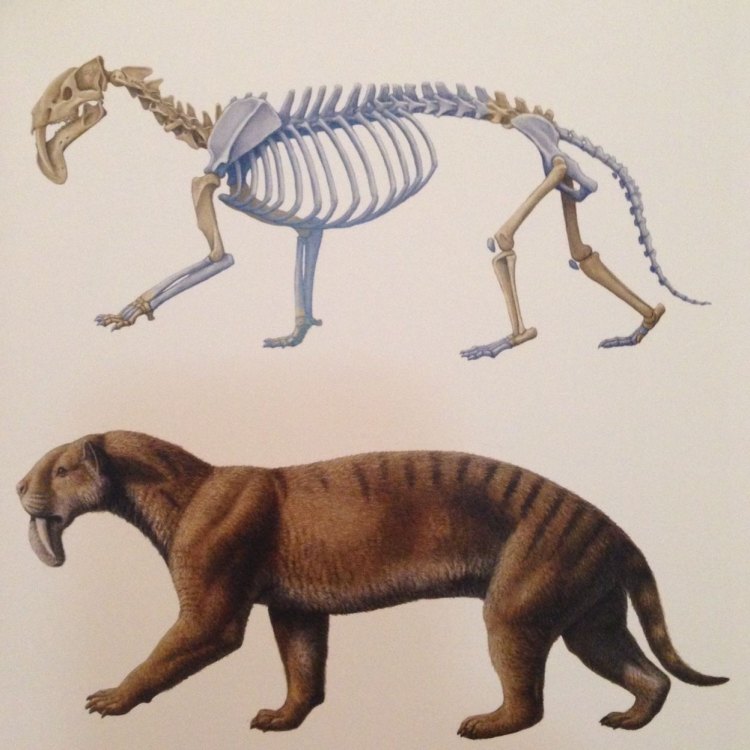
Thylacosmilus
The Marvelous "Marsupial Lion": Thylacosmilus - The Mighty Extinct Carnivore
When we think of lions, we immediately conjure up images of the majestic and powerful big cats roaming the African savannah. However, there was once a lion-like creature that roamed the ancient lands of South America, a creature that has often been overlooked and overshadowed by its more famous feline counterparts. This was the Thylacosmilus, commonly known as the "marsupial lion", a unique and formidable predator that has since gone extinct. In this article, we will delve into the fascinating world of Thylacosmilus, exploring its distinctive features, behavior, and impact on the ecosystem PeaceOfAnimals.Com.The name Thylacosmilus comes from the combination of two Greek words, "thylakos" meaning pouched and "smilus" meaning knife. This highlights the two most distinctive features of this creature - its pouch and its long, blade-like canine teeth. Thylacosmilus belonged to the extinct family of saber-toothed marsupials known as the Thylacosmilidae. They were not actual marsupials, but their skull structure was similar to that of marsupials, thus earning them the nickname "marsupial lion". Thylacosmilus is believed to have lived during the late Miocene to early Pleistocene epochs, approximately 10 to 2 million years ago. Fossils of this species have been found in various regions of South America, including Argentina, Brazil, and Uruguay.
One of the most distinctive and awe-inspiring features of Thylacosmilus was its enormous canine-like teeth. These teeth were not just long, but they were also flat and serrated, more closely resembling the teeth of a steak knife than those of a lion. These fearsome teeth were perfect for slicing through the tough hides and flesh of its prey Texas Coral Snake. Studies have shown that the bite force of Thylacosmilus was among the strongest of any terrestrial mammal, possibly even stronger than that of a modern lion. This suggests that Thylacosmilus was a skilled hunter that took down its prey with precise and powerful strikes of its teeth.
Another notable feature of Thylacosmilus was its long limbs, which were more similar to those of a cheetah rather than a lion. This adaptation allowed Thylacosmilus to be a swift runner, chasing down its prey and giving it an edge in the competitive and dangerous world of the ancient South American landscape. However, despite its impressive physical features, very little is known about the behavior and social groups of Thylacosmilus. Due to the limited fossil records, researchers can only make assumptions about its behavior and reproductive patterns. It is believed that Thylacosmilus may have been a solitary animal, only coming together during the breeding season. It is also thought to have had a viviparous reproductive system, meaning that it gave birth to live young rather than lay eggs.
The sound or call of Thylacosmilus remains a mystery. Unlike modern-day lions, which are known for their powerful roars, there is no scientific evidence to suggest that Thylacosmilus was capable of producing any vocalizations. However, some theories suggest that the structure of its skull and vocal cords could have allowed it to make low growls or grunts.
Despite its mighty appearance and impressive skills as a predator, Thylacosmilus faced threats that eventually led to its extinction. The exact cause of this extinction is still unknown, but it is believed that climate change, competition for resources, and possibly human hunting played a role. As the environment changed and prey became scarce, Thylacosmilus may have struggled to adapt. The arrival of humans, believed to have occurred around 11,000 years ago, could have also contributed to its downfall. With humans hunting and competing for resources, Thylacosmilus may have had a harder time surviving.
The conservation status of Thylacosmilus is now classified as extinct. This once mighty predator no longer walks the Earth, leaving behind only fossils and some unanswered questions. However, its legacy still lives on, as scientists continue to study and learn more about this powerful and unique creature.
But what was the impact of Thylacosmilus on the ecosystem? As with any top predator, Thylacosmilus played a crucial role in regulating the balance of the ecosystem. Its role as a skilled hunter and apex predator would have helped keep herbivore populations in check, preventing overgrazing and maintaining a healthy balance in the food chain. With its extinction, this balance may have been disrupted, leading to potential cascading effects throughout the ecosystem.
Thylacosmilus also had a significant cultural impact, inspiring admiration and curiosity in those who discover its fossils. Its name has been immortalized in books, movies, and even video games, cementing its place in history as one of the most fascinating and powerful predators to have ever roamed the Earth.
Despite its distinguished name and impressive features, one of the most interesting facts about Thylacosmilus is that it was not actually a marsupial. This misconception arose due to its skull structure being similar to that of marsupials. However, genetic studies have shown that Thylacosmilus is more closely related to the extinct predatory marsupials, the Borhyaenidae. This unexpected discovery challenges our understanding of evolutionary history and the relationships between different species.
The question that remains is: what was Thylacosmilus's main predator? With limited information, it is impossible to know for sure. However, some theories suggest that other predators of similar size and strength, such as the giant ground sloths or the prehistoric terror birds, could have been competitors and predators of Thylacosmilus. It is also possible that Thylacosmilus was a top predator and did not have any significant threats, making its extinction even more puzzling.
In conclusion, Thylacosmilus was a fascinating and mighty predator that remains shrouded in mystery. Its unique features, powerful bite, and potential role as a top predator have captivated the imaginations of scientists and the general public alike. It is a reminder that our planet's history is filled with incredible creatures, some of which have sadly gone extinct. But thanks to their fossils and the ongoing research, we can continue to learn about and appreciate these magnificent animals that once roamed our Earth. Thylacosmilus may no longer exist, but its legacy and impact on the ecosystem will continue to fascinate and inspire us for generations to come.
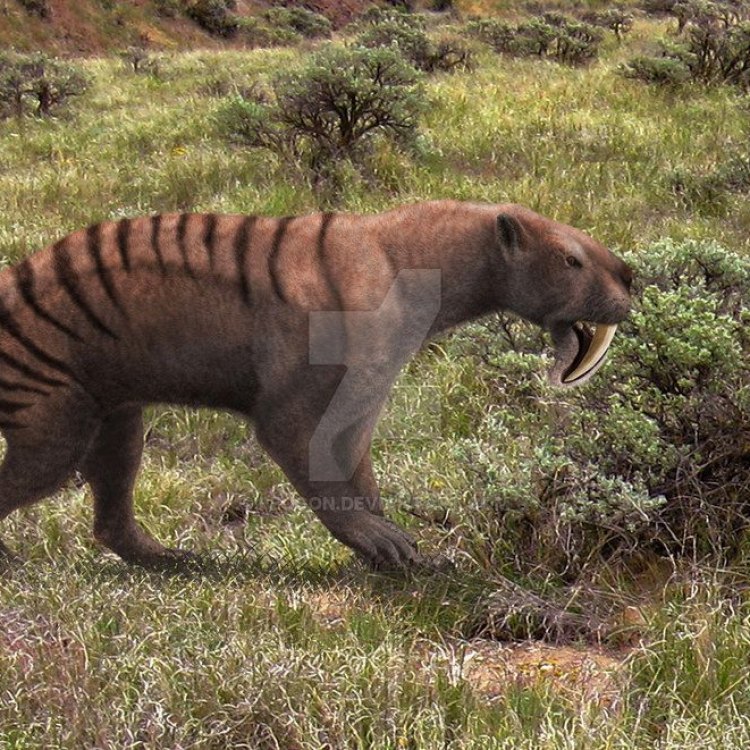
The Enigmatic Thylacosmilus: The Cat-like Carnivore of South America
Disclaimer: The content provided is for informational purposes only. We cannot guarantee the accuracy of the information on this page 100%. All information provided here may change without prior notice.

